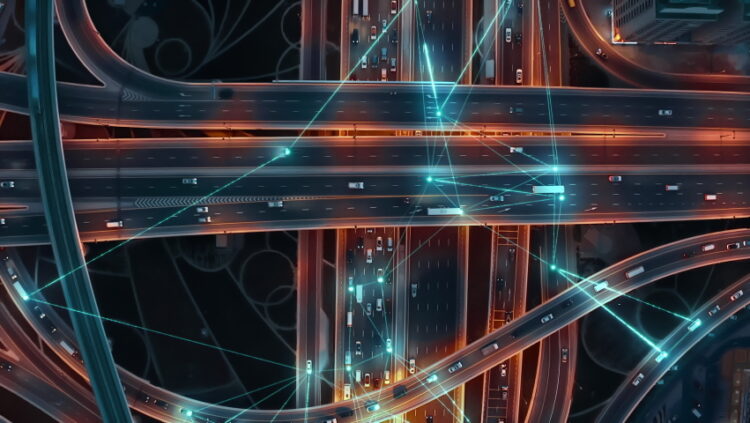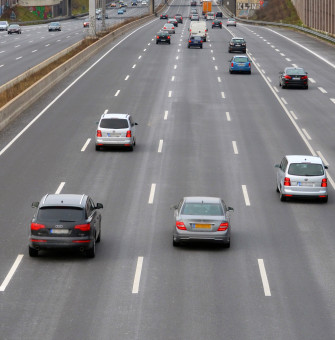The evolution of the automobile is accelerating past the simple concept of driver assistance towards full Autonomy. Self-driving vehicles (AVs) represent more than just a convenience; they promise the most profound revolution in personal mobility and road safety since the invention of the internal combustion engine. Human error accounts for over $90\%$ of all traffic accidents, leading to millions of fatalities and injuries annually worldwide. Autonomous Vehicles, leveraging sophisticated sensor arrays, powerful Artificial Intelligence (AI), and real-time connectivity, hold the potential to drastically mitigate this human element, ushering in an era where traffic collisions are exceptionally rare, rather than commonplace. The focus of the current technological race is not speed or luxury, but safety and reliability—a critical path to societal acceptance and widespread adoption.
This extensive guide delves into the specific levels of autonomous technology, dissects the crucial safety mechanisms (including sensor fusion and redundant systems), explores the complex challenges of regulatory compliance and ethical programming, and maps out the future of road infrastructure and human-vehicle interaction in the age of the self-driving car.
Defining the Autonomous Hierarchy: Levels of Safety
The industry uses the SAE International J3016 standard to classify driving automation, which clearly delineates the division of labor between the human driver and the Automated Driving System (ADS). Safety measures scale exponentially with each increase in the level of autonomy.
1. Levels 0 through 2: Driver Assistance
These initial levels represent the vast majority of vehicles on the road today, focusing on assistance rather than automation.
- Level 0 (No Automation): The human driver performs all the driving tasks. Warnings or momentary interventions are possible (e.g., emergency braking assistance).
- Level 1 (Driver Assistance): The ADS provides single-task assistance, such as Adaptive Cruise Control (ACC) or Lane Keep Assist (LKA). The human driver remains fully responsible for monitoring the environment and executing all other tasks.
- Level 2 (Partial Automation): The ADS handles the combined tasks of steering and accelerating/decelerating (e.g., Highway Autopilot). However, the human driver must constantly monitor the system and be ready to take over control at any moment (hands-on-wheel or visual monitoring required).
2. Levels 3 through 5: True Automation
These levels mark the critical transition where the ADS assumes the primary responsibility for the driving task.
- Level 3 (Conditional Automation): The ADS performs all driving tasks under specific operational design domains (ODD)—such as slow highway traffic. Crucially, the human driver does not need to monitor the environment, but must be available to take over within a few seconds when prompted by the ADS. This handover challenge is a major safety hurdle.
- Level 4 (High Automation): The ADS is fully responsible for the driving within a defined ODD (e.g., a specific geo-fenced urban area, fixed-route taxis). If the system encounters a situation it cannot handle, it will perform a Minimum Risk Maneuver (MRM), safely pulling over or stopping the vehicle, without requiring human intervention.
- C. Level 5 (Full Automation): The ADS is capable of driving under all conditions (all ODDs) that a human driver could manage. The vehicle requires no human presence, steering wheel, or pedals. This is the ultimate goal of the autonomous safety revolution.
Next-Generation Safety: Redundancy and Sensor Fusion
The core of AV safety is the creation of highly reliable systems designed to function flawlessly even when components fail, a concept known as redundancy.
1. Sensor Fusion: Seeing the World Reliably
Unlike humans, who rely primarily on vision, AVs use multiple, independent sensor modalities to perceive the environment, ensuring no single point of failure can blind the system.
- LiDAR (Light Detection and Ranging): Provides a high-definition 3D point cloud map of the environment. LiDAR is excellent for measuring distance and object shape precisely, regardless of lighting conditions, and is the gold standard for redundancy.
- Radar (Radio Detection and Ranging): Excellent for measuring velocity and distance, especially in adverse weather conditions (fog, heavy rain) where vision or LiDAR may struggle. Radar is a key component for long-range object tracking.
- Cameras (Vision Systems): Essential for classifying objects (identifying a pedestrian, a traffic light, or reading text on a sign). Vision provides the necessary context and detail, often supported by deep learning AI models trained on vast datasets.
2. Redundant Systems and Fail-Operational Design
A fully safe AV must be able to continue functioning or fail safely even when critical components fail.
- Steering and Braking Redundancy: A Level 4/5 vehicle must have two or more independent steering mechanisms (e.g., steer-by-wire and a mechanical backup) and multiple braking circuits. If the primary system fails, the secondary system must immediately engage to execute an MRM.
- Compute Redundancy: The main computer responsible for the ADS must have a redundant backup, often running on a different architecture or software stack. If the primary AI unit encounters a critical error, the secondary unit takes over instantly.
- Energy Redundancy: Multiple, separate power sources (batteries, generators) are necessary to ensure the power supply to the critical ADS, sensors, and actuators is maintained throughout any system failure scenario.
3. High-Definition Mapping (HD Maps) and Localization
Precise knowledge of the road environment is crucial for safety, acting as a secondary layer of perception.
- Sub-Centimeter Accuracy: HD Maps provide pre-scanned, highly detailed, centimeter-accurate representations of the road, including lane lines, signage, and traffic light positions. This allows the vehicle to safely plan its trajectory with immense precision.
- Real-Time Localization: The AV constantly compares its real-time sensor data against the HD Map data to determine its exact position on the road. This robust localization is essential for safely navigating complex urban intersections or merging lanes.
- V2X Communication: Vehicle-to-Everything (V2X) communication allows AVs to communicate their speed, trajectory, and intent to other vehicles, traffic infrastructure, and even pedestrians, preventing accidents by sharing information beyond the line-of-sight sensors.
The AI and Software Imperative: Ensuring Trust
The safety of an AV is ultimately determined by the reliability, robustness, and ethical programming of its AI decision-making software.
1. Overcoming Edge Cases (The Corner Cases)
Most traffic accidents are caused by rare, unpredictable events that human drivers handle via intuition—the “edge cases.”
- Millions of Simulation Miles: AI must be rigorously trained and tested using billions of miles of simulated and real-world data, specifically targeting rare scenarios (e.g., a traffic sign covered in snow, a pedestrian crossing where they shouldn’t, a sudden change in road conditions).
- Adversarial Testing: AV software must be subjected to adversarial testing, where engineers intentionally introduce false or conflicting sensor data to stress-test the system’s ability to remain safe and correctly identify and ignore fraudulent inputs.
- Machine Learning Operations (MLOps) for Safety: Establishing secure, traceable, and version-controlled MLOps pipelines is essential to ensure that every update to the core AI is thoroughly validated and deployed safely across the entire fleet.
2. Predictive Safety Models (The Proactive Advantage)
AVs move beyond reacting to hazards; they proactively predict potential dangers.
- Intent Prediction: AI analyzes the movement patterns of other road users (e.g., the slight turn of a cyclist’s head, the acceleration of a nearby vehicle) to predict their likely next move, allowing the AV to adjust its speed or position preemptively.
- Real-Time Risk Scoring: The ADS assigns a continuous, real-time risk score to every scenario. When the score exceeds a threshold, the system immediately executes a conservative, risk-mitigating maneuver, such as slowing down or increasing the distance from other vehicles.
- System Transparency (Explainable AI – XAI): For human monitoring and legal compliance, the AV must be able to explain why it made a specific decision (e.g., “I initiated emergency braking because the radar detected an object’s velocity vector was intersecting my path within 1.5 seconds”).
 Regulatory, Ethical, and Public Acceptance Challenges
Regulatory, Ethical, and Public Acceptance Challenges
Technological readiness must be matched by a robust legal framework and public trust.
1. The Regulatory Maze and Standards
The patchwork of state, national, and international laws presents a significant barrier to scaled AV deployment.
- Defining “Safe Enough”: Governments must establish quantifiable, measurable safety metrics—e.g., AVs must perform 10 or 100 times better than the average human driver—to grant commercial licenses. This data-driven approach is essential for regulatory certainty.
- Accident Liability: Current legal frameworks are based on human fault. New laws must clearly define liability in AV accidents: Does it rest with the manufacturer, the software provider, the fleet operator, or the human fallback driver (in Level 3)? Clear liability standards are essential for insurance and legal clarity.
- Over-the-Air (OTA) Updates and Certification: Regulators must create protocols for certifying safety after OTA software updates, ensuring that continuous improvements do not inadvertently introduce new, systemic safety flaws.
2. Ethical Programming and the “Trolley Problem”
AVs force engineers to program ethical decision-making into the AI, addressing the infamous “Trolley Problem.”
- Pre-Programmed Values: In unavoidable accident scenarios, the AI must have a pre-defined ethical framework (e.g., minimize loss of life, prioritize passengers’ safety, prioritize vulnerability). These ethical choices must be transparent and debated publicly before implementation.
- Minimizing Harm, Not Choosing Victims: Most manufacturers prioritize programming the AV to focus on risk minimization and avoidance rather than explicit victim selection, aiming to maintain vehicle stability and slow down as much as possible to mitigate the severity of the crash.
- Consumer Trust and Acceptance: Public acceptance hinges on trust. Manufacturers must be transparent about the safety data, system limitations, and ethical programming to foster the necessary confidence for mass adoption.
The Future of Infrastructure and Human Interaction
The full safety potential of AVs will only be realized when the vehicles communicate seamlessly with intelligent infrastructure.
1. Smart Infrastructure (V2I)
Vehicle-to-Infrastructure (V2I) communication turns roads into active partners in the driving task.
- Intelligent Traffic Management: Traffic lights, road sensors, and construction zones communicate their status, timing, and conditions directly to the AV, optimizing traffic flow and preventing intersection collisions before they occur.
- Dynamic Speed Limits: Infrastructure can broadcast dynamic speed limits based on real-time factors like visibility, precipitation, and traffic density, ensuring the AV is always operating at the safest possible speed.
- Digital Signage and Lane Closures: AVs receive real-time, digital alerts about lane closures, broken-down vehicles, or road hazards that may be obscured from the vehicle’s sensor view, providing an essential safety overlay.
2. The Human-Vehicle Interface (HVI)
The transition to autonomy requires a safe and clear interaction between the human occupant and the ADS.
- Clear Handoff Protocols (Level 3): The handover in Level 3 must be designed with safety as the ultimate priority. The system must use multi-modal alerts (visual, auditory, haptic) and allow sufficient time for the human to regain full situational awareness before resuming control.
- Driver Monitoring Systems (DMS): In Level 2 and 3 systems, inward-facing cameras and biometric sensors must monitor the driver’s alertness and gaze to ensure they are ready to take over, preventing dangerous distraction or drowsiness.
- Intuitive MRM Communication: In Level 4 situations, the vehicle must clearly communicate its intent to execute a Minimum Risk Maneuver (e.g., “Pulling safely to the shoulder due to sensor failure”) to the occupants, preventing panic and confusion.
Conclusion
Autonomous Vehicles represent an unprecedented opportunity to eliminate the vast majority of traffic fatalities and reshape the landscape of mobility. The next generation of AV safety is built on a foundation of extreme redundancy—multiple, independent sensor modalities fused by powerful AI, backed by fail-operational steering, braking, and computing systems. While the technological hurdles are immense, the societal reward—a world where transport is vastly safer, more efficient, and less stressful—is the ultimate driver. The challenge now lies in the meticulous, ethical development of the AI, the establishment of clear global safety regulations, and the gradual, data-driven cultivation of public trust. The transition to autonomy will be gradual, but the destination is clear: a safer, collision-free future defined by the intelligence of the machine.












